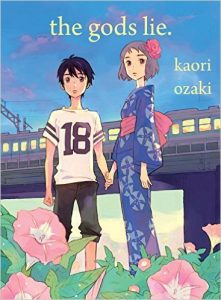Given my general tendency of loving fantasy shoujo series, it is no surprise that I’m thoroughly enjoying Yona of the Dawn. In the last volume Yona and her trusty guard Hak have a narrow escape from her pursuers and end up being cared for by a long-lost priest. I think pacing can be so essential for a good fantasy series. A more rushed storyline doesn’t fit in all the world building that is needed to make a series seem believable for the reader. Yona gets to know her rescuers, the priest Ik-Su, and his snarky companion Yun.
I appreciated that there was some time for flashbacks as Yun tells Yona the story of how he became Ik-Su’s helper. The unlikely combination of a street-smart orphan boy and a priest with an inability to focus on worldly concerns like the necessity of shoes is the foundation for a lifelong friendship. As Yun gets to know Yona, he begins to see that she isn’t the pampered princess he was assuming she was. Hak continues to make random flirtatious comments that don’t seem to register with Yona at all, so I’m assuming that any romance will be developing at an excruciatingly slow pace.
Yona has a new direction and quest, as she learns about the descendants of legendary dragon guardians who protected the Crimson Dragon King in the past. She sets out with Hak and Yun to search for these mystical warriors, and along the way she demands lessons in swordsmanship or archery so she can be of more use in a battle. Hak hands her a bow and she dedicates herself to practicing even though she isn’t very good at the start.
There’s something very cozy and reassuring about reading a volume of a shoujo fantasy series like this, being able to settle in and look forward to a long adventure with many volumes ahead to read. This is one of my favorite manga series of the past year.





Recent Comments